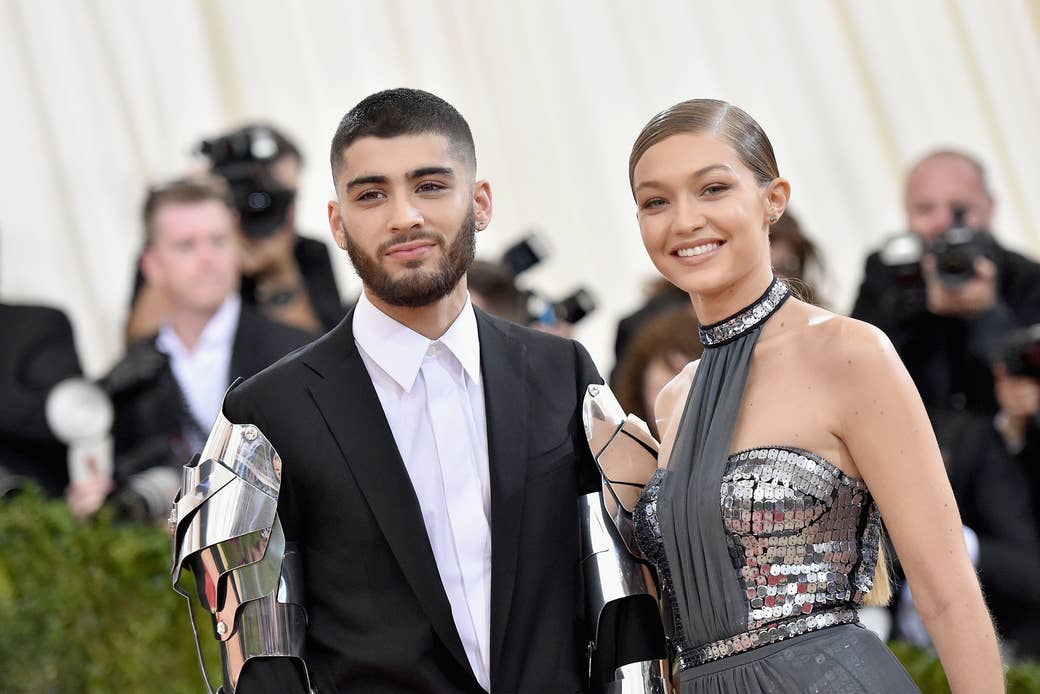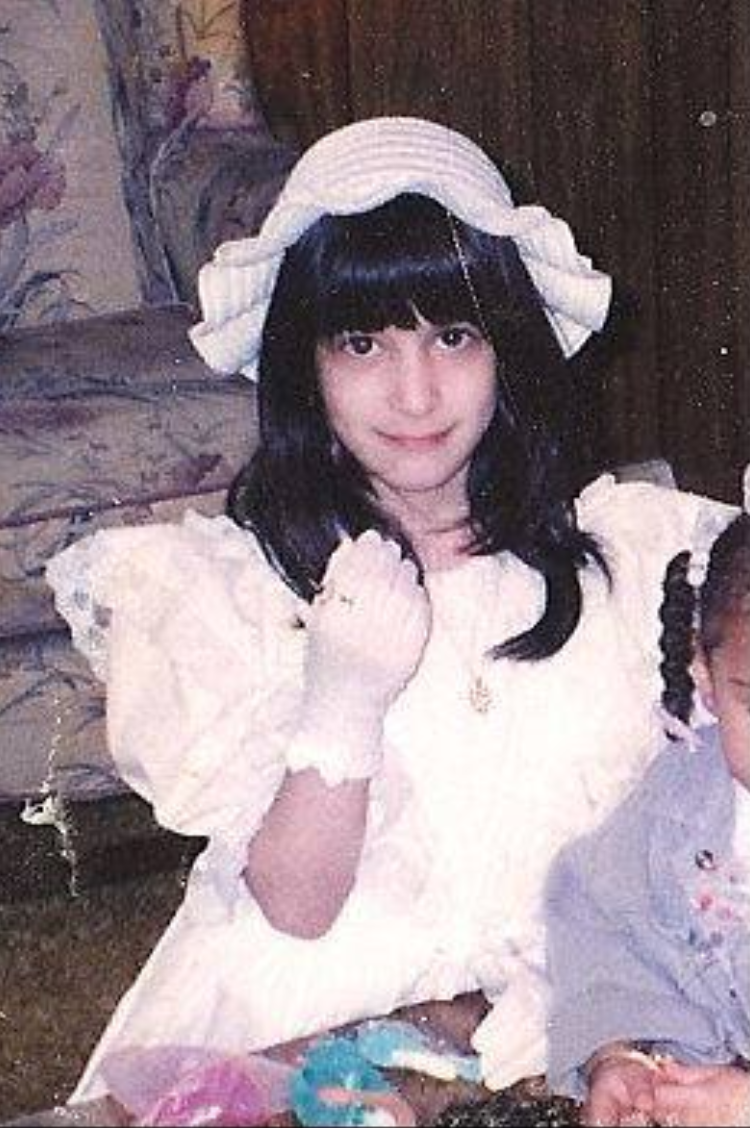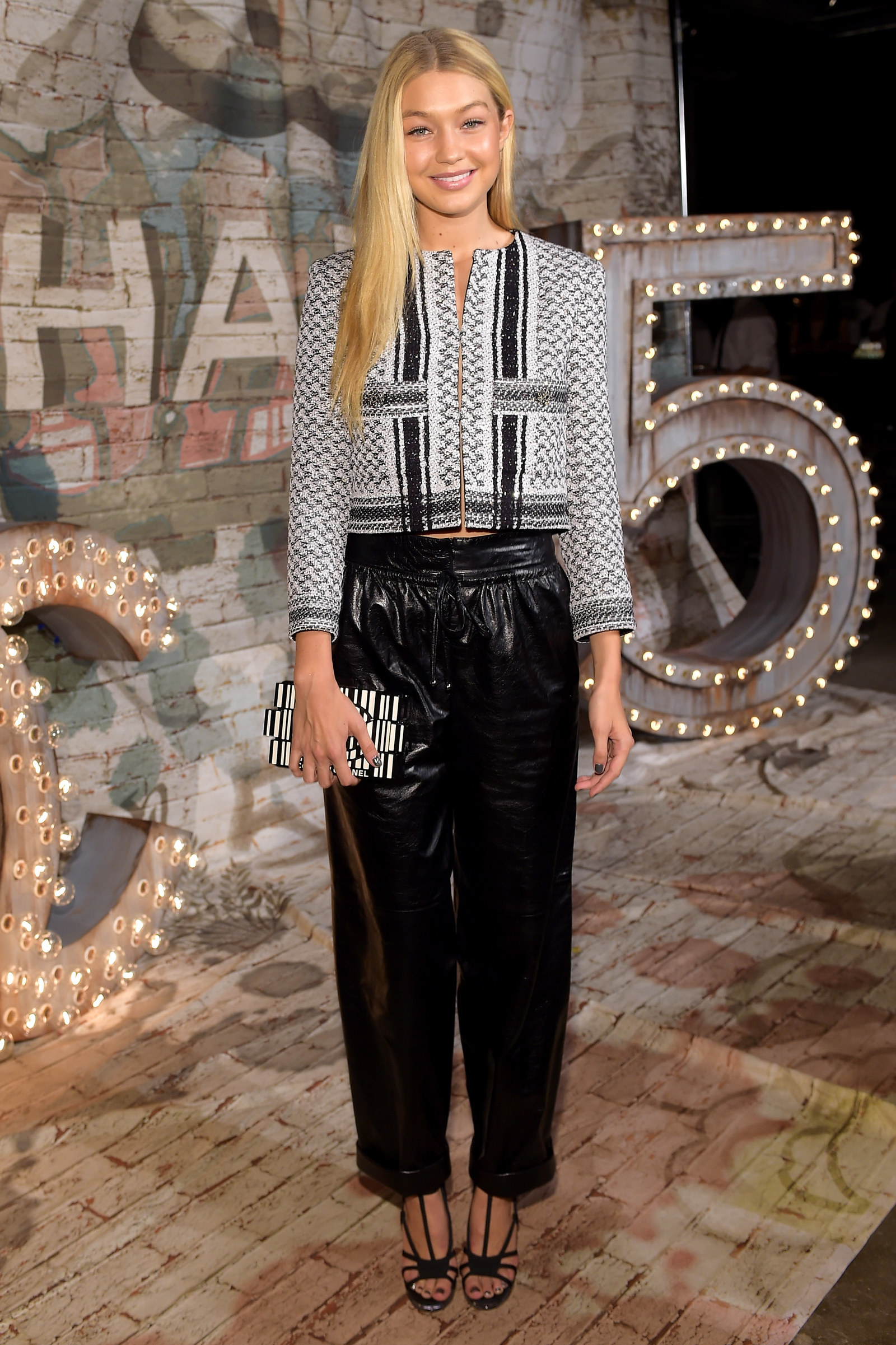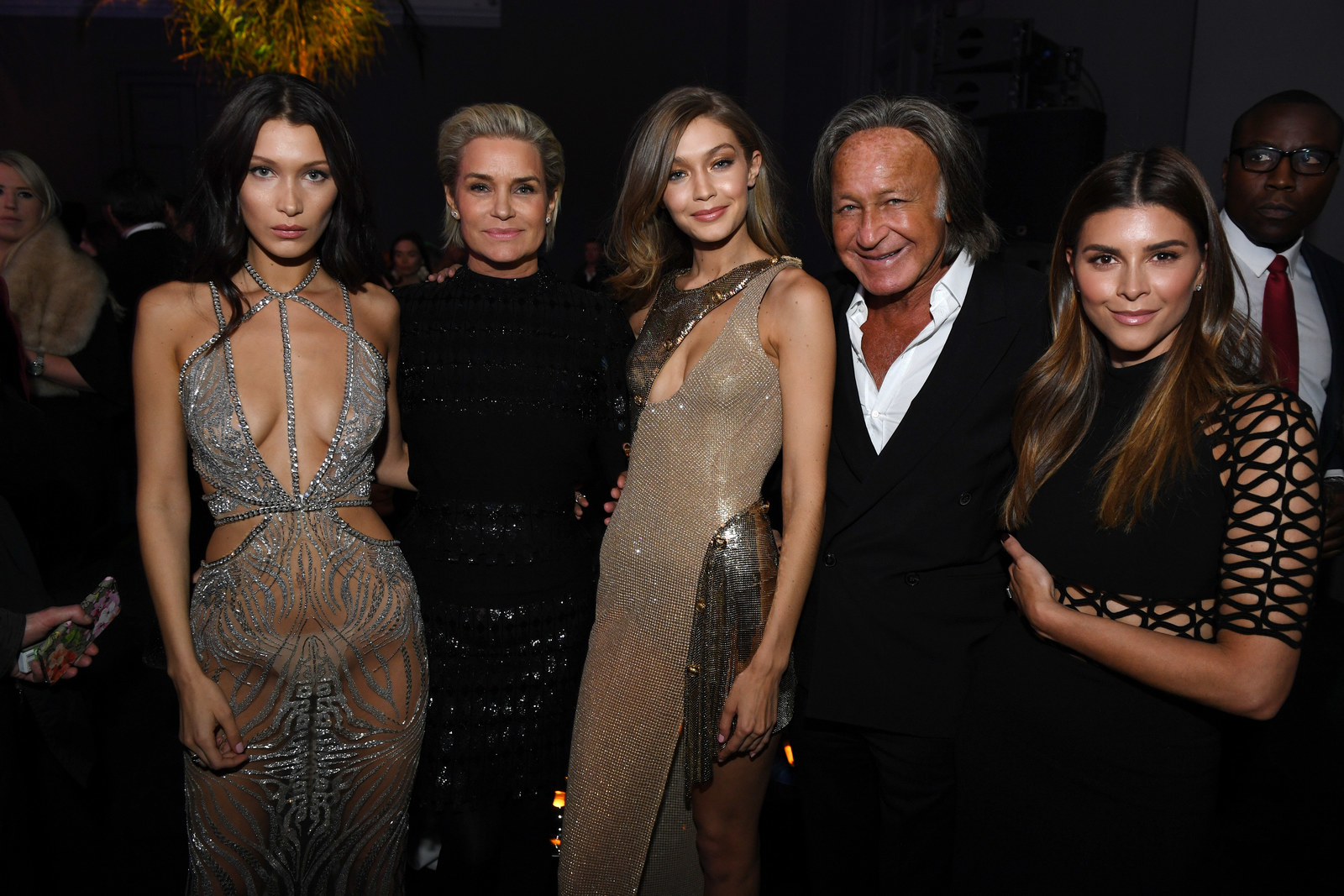
I was a little too excited when Zayn Malik and Gigi Hadid first began dating, way, way back in 2015. That was the year Gigi’s modeling career exploded, as she showed up in the Victoria’s Secret Fashion Show and Taylor Swift’s “Bad Blood” music video. Zayn was in the process of launching his solo career after a dramatic break with One Direction. A romance between two beautiful, successful celebrities isn’t exactly earth-shaking news, and Zayn and Gigi didn’t do anything especially interesting together: They posed in fashion shoots, walked the red carpet together, wore a couples costume for Halloween, and, of course, documented all of it on Instagram.
But what did matter to me is what also fascinated me about them separately: They both have Muslim heritage and are outspoken about how their backgrounds have shaped them. And seeing this desi-Arab-Muslim power couple together, in the pages of the same magazines I had flipped through as a celebrity-obsessed, boy band–loving, Palestinian, Muslim, American teen — looking for Muslim and Arab faces, and finding none — felt like something I had been waiting a long time for.
This week, the couple announced their split after more than two years together, and the breakup was as relatively drama-free as their relationship appeared to be. Zayn described Gigi as an “incredible soul”; in her own statement, Gigi said she was “forever grateful for the love, time, and life lessons.” There was some minor drama over Zayn unfollowing Gigi and her mother, Yolanda Hadid, on Instagram — and the matter of a months-old tattoo of Gigi’s eyes across Zayn’s chest — but as far as celebrity breakups go, this seemed, at least publicly, to be pretty unremarkable.
I wasn’t really heartbroken over the breakup of Gigi and Zayn, the actual people, as much as I was at the end of the idea of their relationship.
I had been so wrapped up in Tuesday morning news that I was genuinely stunned when another editor at work asked if we’d be covering the story, which I’d heard nothing about. And then I was suddenly sad, and then I was mostly embarrassed about being a 31-year-old woman who was this sad about the end of a relationship I wasn’t even in. But I wasn’t really heartbroken over the breakup of Gigi and Zayn, the actual people, as much as I was at the end of the idea of their relationship, and what it had represented to me. They had been so unusual as a fantasy canvas to project the real Muslim romances I’d grown up watching onto: Zayn and Gigi were the couple that sat too close at Muslim Student Association meetings; they were the desi and Arab pair kept apart by cultural differences; the teenagers ducking into cars together when they’ve told their parents they’ve gone to the mosque. Their celebrity realities were miles away from any of ours, but they had backgrounds that made them blank slates for our versions of sweet, unremarkable, all-American stories.
Coverage of Gigi and Zayn, together or separately, meant seeing things like Eid al-Adha — a major Muslim holiday — casually mentioned in publications like People and E! Online after they marked it by taking a selfie with their mothers. Eid al-Adha was a regular part of the United States I grew up in, a day when my family spent time together, exchanged presents, bought new clothes, and ate way too much, and now, it’s also when we post smiling selfies to social media. To see these celebrities doing the same, and to see a note about the holiday in the media coverage of them — free of any offensive, hand-wringing debate over whether or not there are too many Muslims in the US — still feels remarkable.
As a child and throughout my teens, I struggled to find myself reflected in the pop culture around me. Even though I was in elementary school, my dad would turn off my cartoons and watch coverage of the Gulf War with me, and the news seemed to be the only place where I would see Arabs and Muslims. Most of my favorite TV shows, like Full House, Rugrats, and later Dawson’s Creek and Friends, featured mainly white characters — which helped form the idea that uncomplicated lives were not written for people like me. I was so hungry for representation that when Aladdin came out in 1992, the movie — even as a racist mashup of generally Eastern cultures — was revolutionary for me. It was my first time seeing fun, popular characters even remotely representative of my family’s culture; I became so obsessed that I tried to convince my parents to rename me Yasmine.
But after Aladdin, it was a long, empty road for Muslim representation in the mainstream, especially after 9/11. And I just accepted that I would never fully relate to the white heroines in my favorite books — Little Women, the Sweet Valley High series, the Baby-Sitters Club series, The Princess Diaries. A few years ago, I spoke to one of my high school’s librarians and asked him why we never had many books by Arab or Muslim authors. He told me that we never asked for them. It was strange to think that the weight would have been placed on me — a child — to ask for stories that would speak to me. After all, how many white, Christian teenagers have to actually ask librarians for books written about characters who look like them? But everything around me taught me that stories about girls like me simply did not exist. An awkward, opinionated Muslim girl would not roam Bayside High's halls, nor would she ever serve as Dawson Leary's out-of-reach love interest.

That applied to the heartthrobs I fantasized about, too: I was obsessed with boy bands as a teen. While I was mostly loyal to NSYNC, I was easily wooed by any group of young men with coordinated outfits and dance moves. These young men I dreamed about were carefully constructed to cater to my desires as a teenage girl — and most of them were white. I fantasized about the Justin Timberlakes and Brian Littrells of the world, and would always attempt to stamp out the tiny voice that wondered how they might feel about a fan who was Muslim.
By the time One Direction had become the biggest boy band in the world, I felt too old to be obsessed with them in the same way. But I still found joy in listening to their songs, and it had a lot to do with Zayn. He wasn’t necessarily vocal about his Muslim and Pakistani roots while he was in One Direction, but I didn’t love the real Zayn so much as I loved what he could have been to me, back when I was a teenager: the halal crush that I could dream of introducing to my parents, that would have made me feel like my heritage and my world were as commonplace as anyone else’s. There was something incredible about seeing a Muslim man not only become famous but become a sex symbol — seeing a Muslim name like “Zayn Malik” on a thirsty, hot-pink poster sold to teenage girls, rather than on a terror alert.
While Gigi also has a Muslim father, what drew me to her is the fact that she’s Palestinian — and vocal about how proud she is of her background. I first came across her in 2014, when I noticed a photo shoot she did paying tribute to Anna Wintour’s first Vogue cover as editor-in-chief, in 1988, which featured Israeli model Michaela Bercu. Some wondered if Vogue was making a (quiet) political statement about the Israeli-Palestinian conflict by featuring Gigi years later, especially since the photos came soon after the last deadly war in Gaza.
Vogue breezily referenced Gigi’s heritage, and in many ways, that’s Gigi’s approach too: She doesn’t explain or justify the fact that she’s Palestinian; it’s just a part of who she is. When she won Glamour’s “Woman of the Year” award last year, she referred to her father as a “refugee from Palestine” in her acceptance speech. Mohamed Hadid is vocal about the conflict, as well as his heritage. Both Gigi and her sister, Bella, also a model, have spoken about how their father’s background has shaped them, and last year, the sisters joined a protest against Trump’s controversial travel ban.

You could argue that Gigi’s outspokenness is made much easier by the fact that, for the most part, she gets to decide when she wants to remind you that she’s a Palestinian — a luxury that her ex does not have. Zayn faced racism even in the days when he wasn’t as vocal about being Muslim or Pakistani, whether that was from anti-Muslim pundits like Debbie Schlussel warning that he was “pimping” Islam to young girls, or Bill Maher making a joke comparing him to one of the Boston marathon bombers.
Hadid has slammed anti-Muslim bigotry, but she has also made some big stumbles herself, like a video from 2017 showing her mocking Asians on her sister’s Instagram story. But even that is part of what’s so familiar about her to me; missteps like this were commonplace in my own Muslim community, where people had blinders on when it came to addressing inequalities that weren’t their own.
Of course, Gigi and Zayn’s ability to move with an ease that isn’t afforded to others with similar heritage is mostly a testament to the privilege that comes with fame, beauty, and wealth, rather than any huge symbol of progress. Desi-Arab-Muslim power couples aren’t going to unravel the prejudices that these groups have faced in the US — that will probably have a lot more to do with accepting that what it means to be an American is a diverse, ever-changing thing. Not long ago, I was waxing poetic about the Hadids while visiting a relative, and the significance of their visibility as Palestinian-Americans, and she sighed and asked when she would be accepted as an American as she is: a devout, hijab-wearing Muslim immigrant.

I always say that I grew up in Disneyland Palestine: a suburban, North Carolina street dotted with relatives and other Palestinian immigrant families who came together to re-create a version of their homeland for their American children. Being Palestinian was about having way too many cousins, an infuriating surveillance network of nosy aunties, dancing to corny music videos that came on our Arabic satellite television stations, and, of course, eating typically Palestinian meals like musakhan — huge, soft wheels of bread doused in olive oil, topped with sumac, roasted pine nuts, fried onions, and chicken. For me, particularly as a child, my parents’ Palestinian heritage was about all of these things, just as much as it was about knowing our histories and, of course, understanding the conflict with Israel.
But in the US, being Palestinian is rarely viewed outside of the lense of that conflict. And while it is deeply intertwined with being a Palestinian, particularly in a situation that is ongoing and ever-deteriorating, viewing us through that alone has helped dehumanize us entirely. We can never just live, and that’s what the Hadids do: They’re public, Palestinian figures who lead splashy, “ordinary” Hollywood lives. And seeing a family with roots similar to my own become the fodder for ordinary, superficial celebrity gossip coverage — seeing their daughter, who just happens to be a supermodel, date a British and Pakistani boy, who just happens to be a pop star — was remarkable in its own completely unremarkable way. In a country where it's a reasonable thing for a politician to suggest that Palestinians don't even exist, that visibility matters.
While Gigi and Zayn’s split doesn’t make them less meaningful, in terms of what they represent, it does mean an end to a Hollywood romance that seemed to be written just for me. More than two years is a long time for celebrities, and of course, Just Like Us: They Grow Apart! I am still a little sad, but I’m realizing that there was a kind of joy in watching a romance — that just happened to involve two Muslim celebrities — blossom, and then fade out, like any other. ●
